Out in the no longer so Wild West of America, a war is brewing. At the fringes of the great southwestern deserts, in the shadows of the high Sierra Nevada mountains, lies the great Central Valley of California, a primary battleground for this war — a war over water. The war has been brewing here for over a hundred years now, ever since we set out to conquer nature and remake California for our benefit.
Once a seemingly endless mosaic of semiarid grasslands, chaparral, and riparian and oak woodlands, with snowfed rivers (the largest being the Sacramento in the north and the San Joaquin in the south) winding their way through immense swamps and wetlands, this vast valley now sports a laser-leveled flat farmscape crisscrossed by dusty farm roads and busy highways punctuated with nuclei of urban sprawl. The swamps and wetlands have been drained away almost entirely — including what used to be largest body of fresh water west of the Mississippi, the phantom Tulare Lake — and most of the river systems diverted away from the heavily contested Sacramento-San Joaquin Delta into valley farms and suburbs all the way down into southern California.
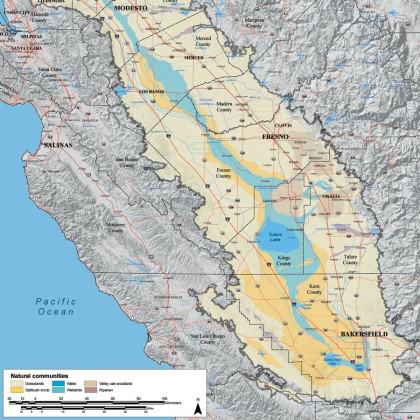
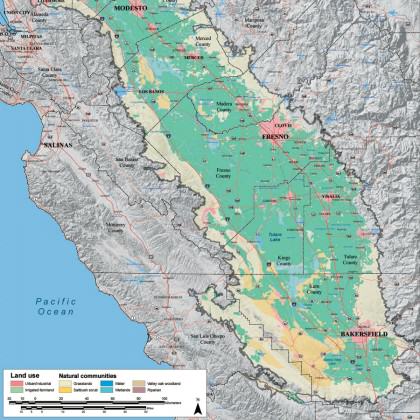
The transformation of the classic California hinterland into the state’s first engine of growth (i.e., well before Hollywood and Silicon Valley came to define California in the public imagination) and the nation’s fruit and vegetable basket is (or ought to be) a well known tale. Throughout the late 19th and the 20th centuries, the Central Valley drew people from all over the US and elsewhere — drawn by gold in the nearby mountains, oil beneath the swampy grasslands, and the rich soils for those fleeing from the dust bowl and the Great Depression — to play their part in what may be one of the largest transformations of the natural landscape our species has ever wrought on this planet. You may recognize the contours of this saga if you’ve read such works as John Steinbeck’s The Grapes of Wrath, Mark Reissner’s Cadillac Desert, or Mark Arax and Rick Wartzman’s The King of California, or seen it on screen in film/TV adaptations of some of these books or classics such as Chinatown and There Will Be Blood.
The gold in them thar hills ran out a while ago, and the oil and gas proved tough to extract from underneath the swamplands until recent technologies such as fracking now have 21st century prospectors eyeing the valley yet again, greedily. The rich soils that drew dust bowl refugees — Okies like Steinbeck’s immortal Joad family — have been depleted and repleted over and over again to the point of exhaustion, only to be resuscitated yet again through the injection of chemicals like some emergency room patient we refuse to let rest or die. One thread that has remained dominant (indeed has become even stronger) in this ongoing tale of human conquest of nature is what we have done to the valley’s water. California’s water wars — especially the ones waged between politically powerful constituencies such as the big industrial farms in the valley and the sprawling megacities to its south, with the Greens caught in between — fill the American news streams regularly, in a periodic rhythm following the region’s droughts and election cycles. It is here that the old frontier mentality of California’s Wild West past battles fiercely with growing movements for environmental responsibility and stewardship to define the state’s future.
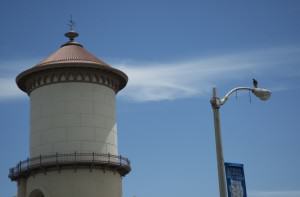
The American West as a whole faces a water crisis — but one that is masked by massive irrigation projects that have kept the cities and farmlands going, spinning beyond the region’s inherent capacity to support such thirsty enterprises as farming (growing everything from rice to raisins in places that may only get a few inches of rain a year) and ever-sprawling megalopolises. A perfect storm of drought, urban growth, climate change, and the continued demands of agriculture have culminated in heightened competition among water users throughout this ‘Cadillac desert‘.
In response to some of the growing water stresses, many cities have taken steps to reduce and better manage urban water use. The Arizona city of Tucson has, for the past two decades, metered and priced water in a strong, tiered price structure that has seen water consumption drop significantly with attendant changes in landscape and biodiversity. Las Vegas, in neighboring arid Nevada, has been navigating the paradox of successfully reducing water use through metering and strongly tiered pricing, while risking loss of revenue to the water district.
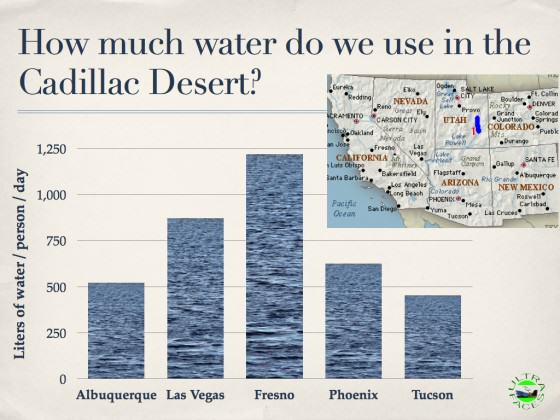 In contrast, major Central Valley cities like Fresno and the state capitol Sacramento have fought a long, withering battle against water meters, with half the valley’s population paying no more than a small flat monthly fee for all the water they choose to use at home. For decades, Fresno was the biggest of these peculiar holdouts, stubbornly refusing to even measure its water use, let alone to make residents pay accordingly. Oddly, Clovis, its immediate neighbor and now part of a contiguous Fresno-Clovis Metro Area, has had meters installed for a century — but they don’t price the water aggressively enough to make a huge difference in water use. Fresno’s frontier mentality had people who lived in a semi-desert ecosystem (defined as one receiving between 10-16 inches / 250-500mm of rainfall annually) consuming more water than most American cities: over 300 gallons/1200 liters per person per day!
In contrast, major Central Valley cities like Fresno and the state capitol Sacramento have fought a long, withering battle against water meters, with half the valley’s population paying no more than a small flat monthly fee for all the water they choose to use at home. For decades, Fresno was the biggest of these peculiar holdouts, stubbornly refusing to even measure its water use, let alone to make residents pay accordingly. Oddly, Clovis, its immediate neighbor and now part of a contiguous Fresno-Clovis Metro Area, has had meters installed for a century — but they don’t price the water aggressively enough to make a huge difference in water use. Fresno’s frontier mentality had people who lived in a semi-desert ecosystem (defined as one receiving between 10-16 inches / 250-500mm of rainfall annually) consuming more water than most American cities: over 300 gallons/1200 liters per person per day!
The conflict over water can be (has been) cast in terms of the classic frontier tropes, of rugged individualists whose rights to use god-given natural resources to shape their own homes are being usurped by big government. The urban water fights In the valley intensified two decades ago when the federal government decided that all users of federally controlled water sources (such as the valley’s many dam and canal projects) had to be metered. Fresno, which claims a good share of water from Millerton Lake on the San Joaquin river, began to comply in 1991 by starting to install meters. According to state law, all new homes built since 1992 must have meters installed.
The residents of Fresno rebelled, however, and voted into the city charter an amendment forbidding the city to read the meters! It took another decade and a half before metering came back into the picture with the state enacting a law specifically requiring Fresno to install meters in all homes and charge according to use. Even as Fresno marches steadily into the era of metered water, Sacramento lags behind (or leads from the rear as usual, wags may say), having pushed their own deadline back to 2025. Just a few weeks ago Fresno won the race, announcing that they have finally completed installation of water meters, ahead of schedule and under budget, bringing the city closer to the 21st century!
As meters were being installed and switched on in phases over the past several years, many Fresnans were already seeing changes in their water bills that now showed the actual amount of water consumed in the household, and the charge per gallon. How empowering, you may think, to know exactly how much of a scarce resource one is using — yet the new bills have many residents howling in protest, especially those with acres of deep lawn carpeting their sprawling suburban estates. You might protest loudly too, if slapped with a bill that asks you to pay as much in a single month as you are used to paying for a whole year of water use!
This profligate use of water (let me remind you: >300 gallons (1200 liters) per person per day!) allowed Fresnans to grow lush landscapes of lawns (and swimming pools), shaded by large trees to evoke ancestral homelands in wetter places. Never mind the depletion of the valley’s ground water even as the city continued to sprawl. As a recent study (of which I am the lead investigator) found, most residents of Fresno and Clovis are aware at some level that they live in a dry part of the world. Indeed the lack of heavy rainfall or snowfall may be part of the region’s suburban living draw! Yet, most residents, rich and poor, also want big lawns where children can play, and a variety of thirsty trees to shade the yards and homes during the valley’s hot summers.
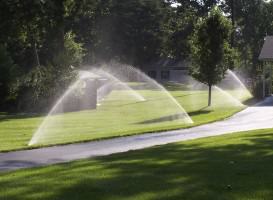
Our studies also found that irrigation — sprinklers in the lawns — is a key driver of urban plant and bird species diversity, with wetter yards tending to support more species. Before you start to call for more irrigation to increase urban biodiversity though, let me point out that the increase in species diversity comes from a number of non-native or exotic species that have been introduced, directly or indirectly, by humans! Reducing urban water use and planting more native-plant gardens may actually reduce the populations of some of these nonnative species and allow more room for native species to come back into the city.
The spatial distribution of plant and bird diversity illustrates a pattern found in many other cities: wealthier neighborhoods, with their well-maintained garden landscapes, tend to support more species than poorer neighborhoods. The striking social and income inequalities of Fresno — it is one of the poorest cities in the US, with one of the highest unemployment rates — are thus also reflected in people’s access to nature and biodiversity within their immediate urban environments. Upward mobility in this context, especially for immigrants from near and far who form the patchwork quilt of Fresno’s culture, often means aspiring for a big house with a well-watered landscape of lawns, trees and flowerbeds, and maybe a giraffe too!
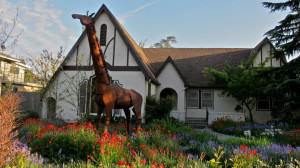
While giraffes are relatively uncommon in Fresno’s yards, surveys and interviews with homeowners suggest a strong cultural inertia in how people conceive of and relate to their immediate landscapes. Most people, from across different income levels, show some awareness that they live in an arid region where water is a scarce resource, although few of them could tell you how much rainfall the region gets in a year, or even how many gallons of water they pour into their own yards every day. Even those who profess to a greater environmental consciousness continue to water relatively lush yards because there was no cost to profligate use. The onset of metering, and the first few bills, are certainly ringing some alarm bells however, and many residents are beginning to wonder about alternative ways that allow them to use their yards as aesthetically and culturally meaningful places while reducing the cost of water, and in the process conserving water resources.
So how do we square this circle then, between our desire for personal landscapes of remembered lushness, and the reality of depleting water resources in the desert we inhabit? We can begin by recognizing the inherent incompatibility, brought into sharp relief in the new water bills. Fresno, under duress from state and federal agencies, has taken the first big step towards better stewardship of its water supply. Residents can respond in two ways: complain about the suddenly high price of their expansive lawns; or rethink their home landscape and its place in local ecology, and transition to water-wise gardens that can provide most of the same aesthetic and recreational benefits as before, but less thirstily.
Fresno residents have an opportunity to find creative ways to ensure the long-term sustainability of their water supply while making their suburban habitats friendlier to nature. A low-water-use or water-wise garden need not be a gravel or sand bed with a few cacti poking through — it is possible to have beautiful gardens filled with native or desert-adapted flowers and trees that have evolved to thrive on little water, and even lawns made up of hardier drought-tolerant grasses. I lead a research group (part of a new national network of urban research sites) that explores just these kinds of possibilities. A garden filled with plants that are not so thirsty is not only lighter on your wallet, it can also support greater biodiversity, provide health and other benefits from a better functioning ecosystem, and quench your soul with beauty.
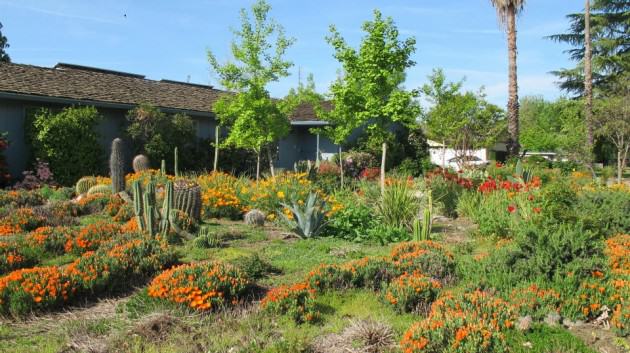
Fresno’s water conundrum is a microcosm of humanity’s frayed relationship with nature. The Earth is overcrowded compared to a century ago, but the bigger problem is that each one of us now consumes far more resources (or wants to) than a generation ago. Our very economic model is based on perpetual growth, which is at odds with a finite planet. Time for us to turn off our sprinklers and pause the growth bandwagon to repair our relationship with nature, to stop being mere consumers and become stewards of planet Earth.
Madhusudan Katti
Fresno, California USA
Note: All photos by Madhusudan Katti and Kaberi Kar Gupta
About the Writer:
Madhusudan Katti
Madhusudan is an evolutionary ecologist who discovered birds as an undergrad after growing up a nature-oblivious urban kid near Bombay, went chasing after vanishing wildernesses in the Himalaya and Western Ghats as a graduate student, and returned to study cities grown up as a reconciliation ecologist.

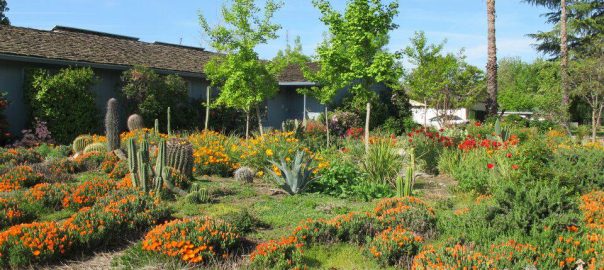


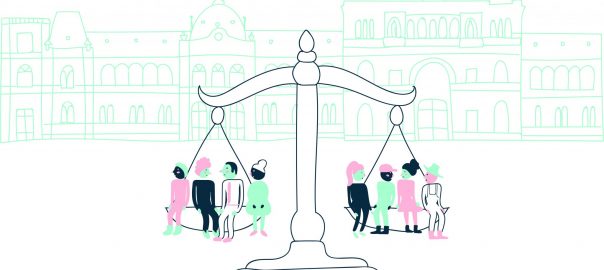
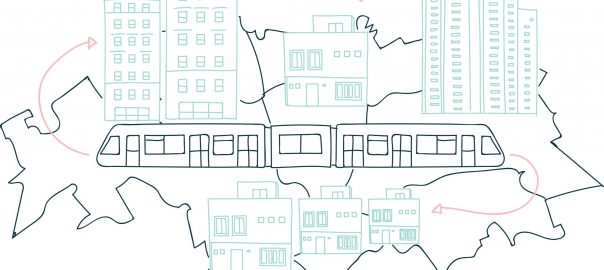
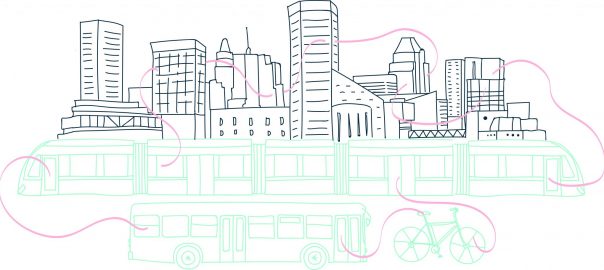
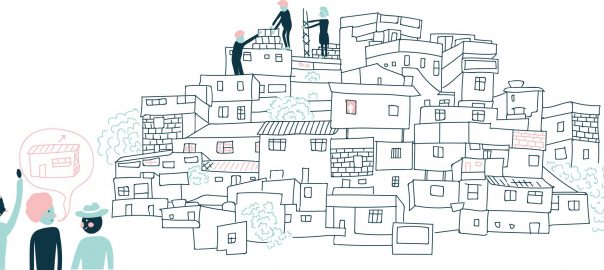
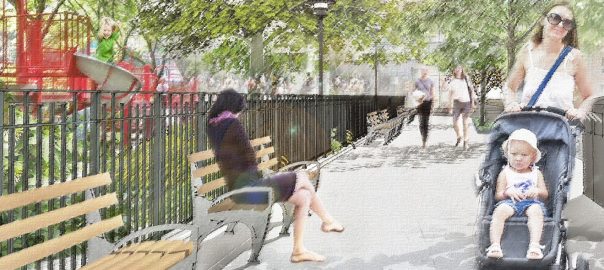
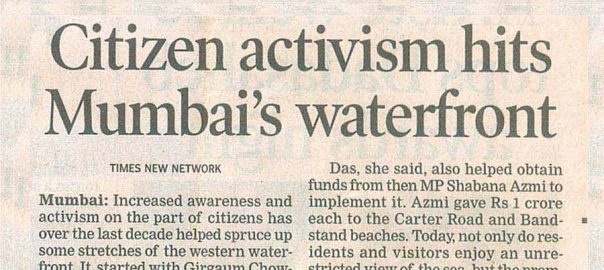
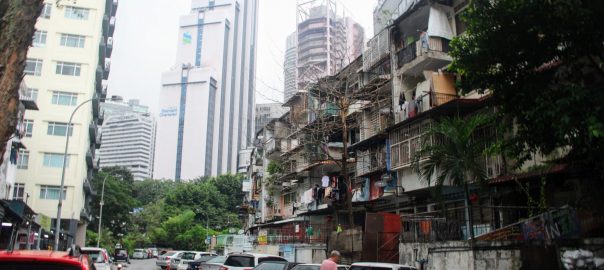

Thank you Stephanie, Georgia, and Marcia for your kind words. I do have much more to explore and write on the subject so I’m glad to find others interested in reading what I write. Fresno is indeed something of an anachronism in its attitude towards water, but things are changing and we are looking forward to documenting how things change in the city with the new metering regime.
Keith… umm… not sure what to say. I’m just hoping you had your tongue planted in cheek when writing that comment.
Great article, Madhu! I had no idea that Fresno was such a water consumer, although being from Phoenix, this should not surprise me.
I very much enjoyed your contribution to this blog. The water use data you provided is very interesting but what is more fascinating to me are the culture-nature interactions. I hope you will write additional stories about the various reconciliations to “our desire for personal landscapes of remembered lushness, and the reality of depleting water resources in the desert we inhabit”. Thank you.
First, it’s unsurprising to me that people in a place like Fresno use so much more water than other places. It is dry there, and the water is freely available, so why not? Secondly, another solution besides austerity exists that does NOT require reducing water— subtract as many users as possible from the equation. Reduce the population of the Valley and at some point, individual water usage becomes moot. How to deliberately reduce the population? Simply reduce the availability of water to certain (more helpless) segments of the population and watch as the overall population declines.
I think there is insufficient exploration of this possibility in your evaluation, because I believe that this possibility— euphemistcally, “population control” or “population-shifting”— is one of the most likely outcomes of any resource shortage, particularly a resource as vital as water.
Why do I think that? Because like its more extreme cousin, “self-deportation”, it is among the cruelest of resolutions, and cruelty not only makes economic sense, but has become visibly increasingly politic.
Welcome to thenature of cities, and what a great start!! It is very interesting as a Los Angeleno, to constantly be castigated for our water use (117 gals/per person per day), with ambitious plans for water recycling, increasing landscape change and more groundwater infiltration. The lesson is, really, we can all do more, and if we did — together — we would all be better off.
THANK YOU!